SEO In One Day
SEO is simply not as hard as people pretend like it is; you can get 95% of the effort with 5% of the work, and you absolutely do not need to hire a professional SEO to do it, nor will it be hard to start ranking for well-picked key terms.
Of all the channels we’ll be discussing, SEO is the one that there is the most misinformation about. Some of it is subtle, but some of it is widely spread and believed by so-called SEO consultants who actually don’t know what they’re doing.
SEO is very simple, and unless you’re a very large company it’s probably not worth hiring somebody else to do.
How Google Works
In order to understand what we need to do for SEO let’s look back at how Google started, how it’s evolving today, and develop a groundwork from which we can understand how to get ranked on Google.
dis
The Early Days of Google
The idea for PageRank — Google’s early ranking algorithm — stemmed from Einstein. Larry Page and Sergei Brin were students at Stanford, and they noticed how often scientific studies referred to famous papers, such as the theory of relativity. These references acted almost like a vote — the more your work was referenced the more important it must be. If they downloaded every scientific paper and looked at the references, they could theoretically decide which papers were the most important, and rank them.
They realized that because of links, the Internet could be analyzed and ranked in a similar way, except instead of using references they could use links. So they set about attempting to “download” (or crawl) the entire Internet, figuring out which sites were linked to the most. The sites with the most links were, theoretically, the best sites. And if you did a search for “university,” they could look at the pages that talked about “university” and rank them.
Google Today
Google works largely the same way today, although with much more sophistication and nuance. For example, not all links carry the same weight. A link from an authoritative site (as seen by how many links a site has pointing at it) is much more valuable than a link from a non-authoritative site. A link from the New York Times is probably worth about 10,000 links from sites that don’t have much authority.
At the end of the day the purpose of Google is to find the “best” (or most popular) web page for the words you type into the search bar.
All this means is we need to make it clear to google what our page is about, and then make it clear that we’re popular. If we do that we win. In order to do that, we’ll follow a very simple process that works every single time with less effort than you probably think is required.
Gaming the System
Google is a very smart company. The sophistication of the algorithms they write is incredible; bear in mind that there are currently cars driving themselves around Silicon Valley powered by Google’s algorithms.
If you get too far into the SEO rabbit hole you’ll start stumbling upon spammy ways to attempt to speed up this process. Automated software like RankerX, GSA SER, and Scrapebox, instructions to create spam or spin content, linkwheels, PBNs, hacking domains, etc.
Some of that stuff works very short term, but Google is smart and it is getting smarter. It gets harder to beat Google every day, and Google gets faster at shutting down spammy sites every day. Most don’t even last a week before everything you’ve done disappears and your work evaporates. That’s not the way you should do things.
Instead of Internet-based churn and burn we’ll be focusing on building equity in the Internet. So if you see some highly-paid SEO consultant telling you to use software and spun content to generate links, or when you see some blackhatter beating the system, just know that it’s not worth it. We’re going to build authority and get traffic fast, but we’re going to do it in a way that doesn’t disappear or cripple your site in the future.
On-Page SEO
The first step in getting our site ready to rank is making it clear to Google what our site is about.
For now we’re going to focus our home page (our landing page) on ranking for one keyword that isn’t our brand or company name. Once we do that and get that ranking we can branch out into other keywords and start to dominate the search landscape, but for now we’ll stay laser focused.
Keyword Research
The first thing we need to do is to figure out what that keyword is. Depending on how popular our site is and how long it’s been around, the level of traffic and difficulty we’ll get from this effort may vary.
The Long Tail
There’s a concept we need to be familiar with known as the “long tail.”
If we were to graph “popularity” of most things with “popularity” being the Y axis and the rank order being the X axis, we’d get something like a power law graph:

There are some big hits that get the majority of attention, and after a few hits the graph falls sharply. The long-tail theory says that as we become more diverse as a society the yellow end of the above graph will stretch forever and get taller.
Think of Amazon. They probably have a few best-selling products, but the majority of their retail revenue comes from a wide variety of things that aren’t bought anywhere nearly as often as their best-selling products. Similarly, if we were to rank the popularity of the songs played in the last 10 years, there would be a few hits that would garner the majority of plays, and an enormous number of songs that have only a few plays. Those less popular products and songs are what we call the long tail.
In SEO this matters because, at least in the beginning, we’re going to go after long tail keywords — very exact, intention-driven keywords with lower competition that we know can win, then gradually we’ll work our way to the left.
Our site isn’t going to outrank ultra-competitive keywords in the beginning, but by being more specific we can start winning very targeted traffic with much less effort.
The keywords we’re looking for we will refer to as “long-tail keywords.”
Finding the Long Tail
In order to find our perfect long-tail keywords, we’re going to use a combination of four tools, all of which are free.
The process looks like this:
- Use UberSuggest, KeywordShitter and a little bit of brainstorming to come up with some keywords
- Export those keywords to the Google Keyword Planner to estimate traffic level
- Search for those keywords with the SEOQuake chrome extension installed to analyze the true keyword difficulty
Don’t be intimidated — it’s actually very simple. For this example we’ll pretend like we were finding a keyword for this book (and we’ll probably have to build out a site so you see if we’re ranked there in a few months).
Step 1: Brainstorming and Keyword Generating
In this step we’re simply going to identify a few keywords that seem like they might work. Don’t concentrate too much on culling the list at this point, as most bad keywords will be automatically eliminated as a part of the process.
So since this is a book about growth hacking, I’m going to list out a few keywords that would be a good fit:
Growth hacking
Growth marketing
Internet marketing
Growth hacking guide
Growth hacking book
Book about growth hacking
What is growth hacking
Growth hacking instructions
That’s a good enough list to start. If you start running out of ideas go ahead and check out keywordshitter.com. If you plug in one keyword it will start spitting out thousands of variations in just a few minutes. Try to get a solid list of 5–10 to start with.
Now we’ll plug each keyword into UberSuggest. When I plug the first one — “growth hacking” — in, I get 246 results.
Clicking “view as text” will let us copy and paste all of our keywords into a text editor and create an enormous list.
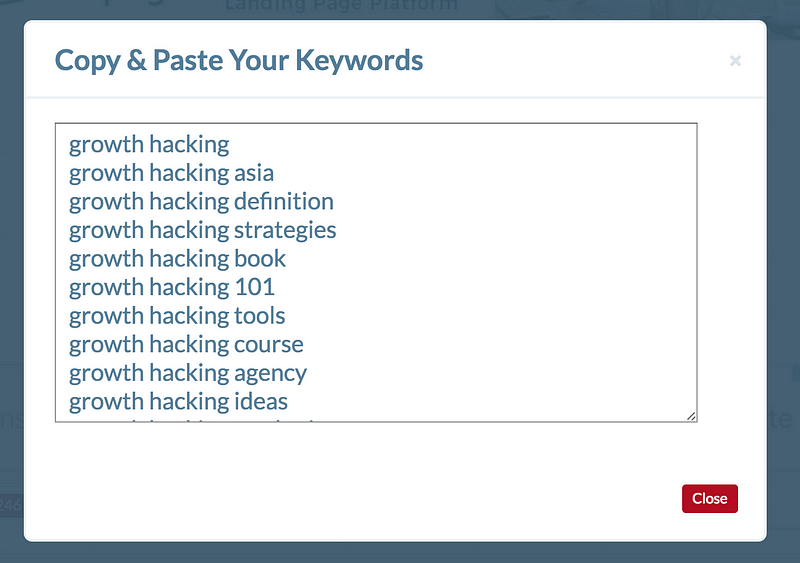
Go through that process with each keyword you came up with.
Now we’ll assume you have 500+ keywords. If you don’t, try to start with something more generic and broad as a keyword, and you’ll have that many quickly. Ideally you’ll have over 1500.
Step 2: Traffic Estimating
Now that we have a pretty good list of keywords. Our next step is to figure out if they have enough search volume to be worth our while.
You’ll likely notice that some are so far down the long tail they wouldn’t do much for us. For example, my growth hacking list came up with “5 internet marketing techniques.” We probably won’t go after that one, but instead of guessing we can let Google do the work for us. This will be our weeding out step.
Google Keyword Planner
The Google Keyword Planner is a tool meant for advertisers, but it does give us some rough idea of traffic levels.
Google doesn’t make any promise of accuracy, so these numbers are likely only directionally correct, but they’re enough to get us on the right track.
You’ll have to have an AdWords account to be able to use the tool, but you can create one for free if you haven’t use AdWords in the past.
Once you’ve logged in, select “Get search volume data and trends.”
Paste in your enormous list of keywords, and click “Get search volume.” Once you’ve done so, you’ll see a lot of graphs and data.
Unfortunately the Keyword Planner interface is a little bit of a nightmare to work within, so instead we’re going to export our data to excel with the “download” button and play with it there.
Now what we’re going to do is decide what traffic we want to go after.
This varies a bit based on how much authority your site has. So let’s try to determine how easy it will be for you to rank.
Go to SEMrush.com and enter your URL, looking at the total backlinks in the third column:
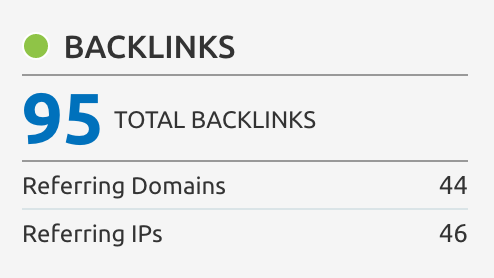
As a general rule (this may vary based on how old your site is, who the links are from, etc.), based on the number of links you have, this is the maximum level of “difficulty” you should go after.
Number of Backlinks
Maximum Difficulty
< 30:<40
<100:40–50
<1000:50–70
1000+:70+
Go ahead and sort the data by difficulty, and eliminate all of the stuff that is too high for your site (don’t worry, we’ll get those keywords later). For now you can simply delete those rows.
Exact Match
One important thing to note is that Google gives us this volume as “exact match” volume. This means that if there is a slight variation of a keyword we will see it if the words are synonyms, but not if they are used in a phrase, so the traffic will be underestimated from what you would expect overall.
Now with that disclaimer sort the traffic volume highest to lowest, and from this data pick out five keywords that seem like a good fit.
Here are mine:
growth hacking strategies
growth hacking techniques
growth hacking 101
growth hacking instagram
growth hacking twitter
Mine all look the same, but that may not necessarily be the case.
Keyword Trends
Unfortunately the “keyword difficulty” that Google gives us is based on paid search traffic, not on natural search traffic.
First, let’s use Google Trends to view the keyword volume and trajectory simultaneously. You can enter all of the keywords at the same time and see them graphed against each other. For my keywords it looks like this:
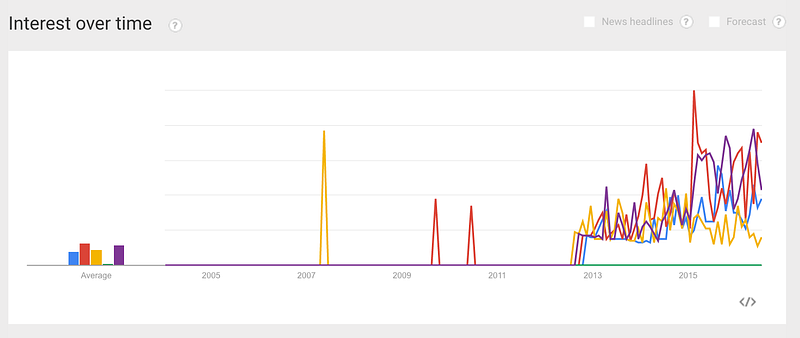
The ones I’m most excited about are purple and red, which are “Growth hacking techniques” and “Growth hacking Twitter.”
Now we’ll take a deeper look at what the competition is like for those two keywords.
Manual Keyword Difficulty Analysis
In order to analyze how difficult it will be to rank for a certain keyword, we’re going to have to look at the keywords manually, one by one. That’s why we started by finding some long-tail keywords and narrowing the list.
This process gets a lot easier if you download the SEOQuake Chrome extension. Once you’ve done that, do a Google search and you’ll notice a few changes.
With SEOQuake turned on the relevant SEO data of each site is displayed below each search result.
We’re going to alter what is displayed, so in the left-hand sidebar click “parameters” and set them to the following:
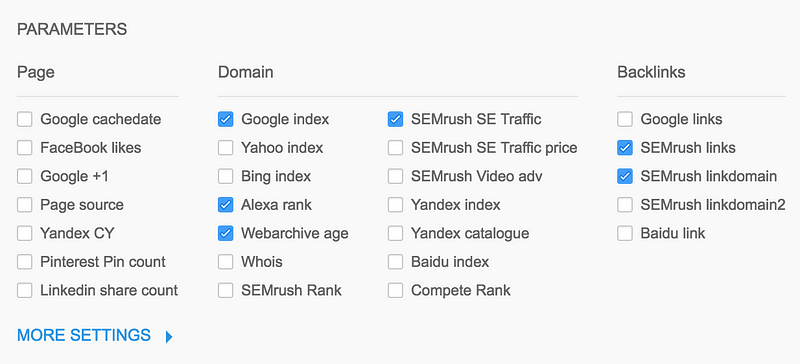
Now when you search, you’ll see something like this

SEOQuake adds a ranking number, and the following at the bottom:
The Google Index: This is how many pages from this base URL Google has indexed
Page Links: The number of pages linking to the exact domain that is ranking according to SEMrush’s index (usually very low compared to reality, but since we’ll be using this number to compare it wil be somewhat apples to apples)
URL Links: The number of pages pointing to any page on the base URL
Age: The first time the page was indexed by the Internet Archive
Traffic: A very rough monthly traffic number for the base URL
Looking at these we can try to determine approximately what it would take to overtake the sites in these positions.
You’ll notice that the weight of the indicators change. Not all links are from as good of sources, direct page links matter much more than URL links, etc., but if you google around and play with it for a while you’ll get a pretty good idea of what it takes.
If you have a brand new site it will take a month or two to start generating the number of links to get to page one. If you have an older site with more links it may just be a matter of getting your on-page SEO in place. Generally it will be a mixture of both.
Keep in mind that we’re going to optimize our page for this exact keyword, so we have a bit of an advantage. That said, if you start to see pages from sites like Wikipedia, you will know it’s an uphill battle.
Here are a couple of examples so you can see how you should think through these things, starting with “Growth hacking techniques.”

Entrepreneur.com is definitely a big name, and “growth hacking techniques” is in the title explicitly. This will be difficult to beat, but there are no links in the SEMRush index that point direct to the page.
(By the way, I wonder how hard it would be to write an article for entrepreneur.com — I could probably do that and build a few links to that easily, even linking to my site in the article).

Yongfook.com, have never heard of that site. 206 total links, not much traffic, this one I could pass up. It does have quite a bit of age and “Growth hacking tactics” in the title explicitly, so that would make it tough, but this one is doable to pass up after a while.

Alright, so quicksprout is relatively popular, a lot of links, good age, lots of traffic, a few links direct to the page but not a ton.
But the word “tactics” doesn’t even appear here. This page isn’t optimized for this keyword, so I could probably knock it out by being optimized specifically for “growth hacking tactics.”
Let’s jump down a ways to see how hard it would be to get on the front page.

17 total pages indexed? Created in 2014? No links in the index, even to the root URL? This one’s mine. I should be able to front-page easily.
So this looks like a good keyword. Now we just have to get the on-page SEO in place and start building a few links.
On-Page SEO
Now that we have our keyword selected, we need to make sure Google knows what our site is about. This is as simple as making sure the right keywords are in the right places. Most of this has to do with html tags, which make up the structure of a webpage. If you don’t know html or understand how it works, just pass this list to a developer and they should be able to help you.
Here is a simple checklist you can follow to see if your content is optimized.
On-Page SEO Checklist
☐ Your keyword is in the <title> tag, ideally at the front (or close to the front) of the tag
☐ Your keyword is close to the beginning of the <title> tag (ideally the first words)
☐ The title tag contains less than the viewable limit of 65 characters (optional but recommended)
☐ Your keyword is in the first <h1> tag (and your page has an <h1> tag)
☐ If your page contains additional header tags (<h2>, <h3>, etc) your keyword or synonyms are in most of them
☐ Any images on the page have an <alt> tag that contain your chosen keyword
☐ Your keyword is in the meta description (and there is a meta description)
☐ There is at least 300 words of text on the page
☐ Your keyword appears in the URL (if not the homepage)
☐ Your keyword appears in the first paragraph of the copy
☐ Your keyword (or synonyms — Google recognizes them now) is used other times throughout the page
☐ Your keyword density is between .5% and 2.5%
☐ The page contains dofollow links to other pages (this just means you’re not using nofollow links to every other page)
☐ The page is original content not taken from another page and dissimilar from other pages on your site
If you have all of that in place you should be pretty well set from an on-page perspective. You’ll likely be the best-optimized page for your chosen keyword unless you’re in a very competitive space.
All we have left now is off-page optimization.
Off-Page SEO
Off-Page SEO is just a fancy way to say links. (Sometimes we call them backlinks, but it’s really the same thing.)
Google looks at each link on the web as a weighted vote. If you link to something, in Google’s eyes you’re saying, “This is worth checking out.” The more legit you are the more weight your vote carries.
Link Juice
SEOs have a weird way to describe this voting process; they call it “link juice.” If an authoritative site, we’ll say Wikipedia for example, links to you, they’re passing you “link juice.”
But link juice doesn’t only work site to site — if your homepage is very authoritative and it links off to other pages on your site, it passes link juice as well. For this reason our link structure becomes very important.
Checking Link Juice
There are a number of tools that let you check how many links are pointing to a site and what the authority of those pages are. Unfortunately none of them are perfect — the only way to know what links are pointing to your site is to have crawled those pages.
Google crawls most popular pages several times per day, but they don’t want you manipulating them, so they update their index pretty slowly.
That said, you can check at least a sample of Google’s index in the Google Search Console (formerly known as Webmaster Tools). Once you navigate to your site, In the left-hand side select “Search Traffic” then “Links to your site.” There’s a debate raging over whether or not this actually shows you all of the links Google knows about (I’m 99% convinced it’s only a sample), but it’s at least a representative sample.
To see all of your links, click on “More” under “Who links to you the most” then “Download this table.” This, again, seems to only download a sample of what Google knows about. You can also select “Download latest links” which provides more recent links than the other option.
Unfortunately this doesn’t let us see much a to the value of the links, nor does it show us links that have dropped or where those links are from.
To use those there are a wide variety of tools: If you have a budget I’d go with ahrefs.com as they have the biggest index, followed by Moz’s Open Site Explorer (most of the data you can get with a free account, if not then it’s slightly cheaper than ahrefs), and finally SEMrush, which is free for most purposes we need. MajesticSEO uses a combination of “trust flow” and “citation flow” which also works fairly well to give you an idea as to the overall health and number of links pointing to your site.
All of these use different internal metrics to determine the “authority” of a link, but using them to compare apples to apples can be beneficial.
Link Structure
HTML links look something like this:
<a href=”http://www.somesite.com” title=”keyword”>Anchor text</a>
Where http://www.somesite.com is the place the link directs you to, the title is largely a remnant of time gone by, and the linked text — think the words that are blue and you click on — is called the “anchor text.”
In addition to the amount of link juice a page has, the relevance of the anchor text matters.
Generally speaking you want to use your keyword as the anchor text for your internal linking whenever possible. External linking (from other sites) shouldn’t be very heavily optimized for anchor text. If 90% of your links all have the same anchor text Google can throw a red flag, assuming that you’re doing something fishy.
If you’re ever creating links (like we’ll show you in the future) I only ever use something generic like the site name, “here” or the full URL.
Internal Structure
Generally speaking you don’t want orphan pages (those that aren’t linked to by other pages), nor do you want an overly-messy link structure.
Some say the ideal link structure for a site is something like this:
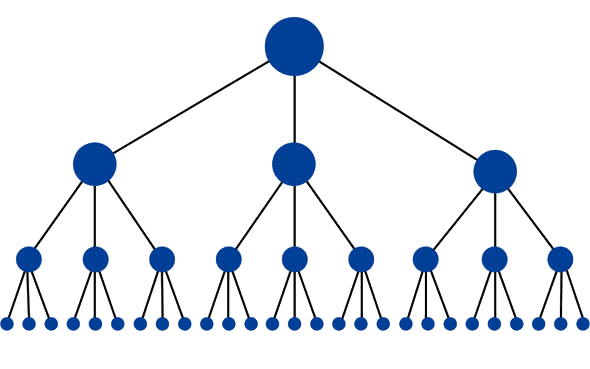
That’s close, but it gets a couple things wrong. First, you’ll never have a structure that organized, and second, in an ideal world every page would link to every other page on its same level. This can easily be done with a footer that feels like a sitemap or “recommended” pages. That allows you to specify anchor text, and pass link juice freely from page to page.
Unfortunately it’s impossible to draw such a web without it becoming a mess, so you’ll just have to imagine what that actually looks like.
We have just one more thing to go over before we start getting those first links pointing to our site.
Robots.txt, disavow, nofollow, and other minutia
Most of SEO is managing stuff that can go wrong. There is a lot of that, but we’ll go over what will cover 99% of needs, and you can Google if there’s something really crazy.
Robots.txt
Almost every site has a page at url.com/robots.txt — even google has one.
This is just a plain text file that lets you tell search engine crawlers what to crawl and not to crawl. Most are pretty good about listening, except the Bingbot, which pretty much does whatever it wants no matter what you tell it. (I’m mostly kidding.)
If you don’t want Google to crawl a page (maybe it’s a login page you don’t want indexed, a landing page, etc.) you can just “disallow” it in your robots.txt by saying disallow: /somepage.
If you add a trailing / to it (e.g. disallow: /somepage/) it will also disallow all child pages.
Technically you can specify different rules for different bots (or user agents), but it’s easiest to start your file with “User-agent: *” if you don’t have a need for separate crawling rules.
Disavow
Google will penalize spammy sites, and unfortunately this causes some bad behavior from bad actors. Say, for example, you wanted to take out a competitor. You could send a bunch of obviously spammy links to their site and get them penalized. This is called “negative SEO,” and is something that happens often in highly contested keywords. Google generally tries to pretend like it doesn’t happen.
In the case that this does happen, however, you can “Disavow” links in the Search Console, which is pretty much saying, “Hey Google, don’t count this one.” I hope you’ll never have to use it, but if you hire (or have hired) a bad SEO or are being attacked by a competitor, that is how you combat it.
Nofollow
A link can have a property called “nofollow” such as this:
<a href=”http://www.somesite.com” title=”keyword” rel=”nofollow”>Anchor text</a>.
If you want to link to somebody but you don’t want it to count as a vote (you don’t want to pass link-juice), or you support user-generated content and want to deter spammers, you can use a nofollow link. Google says it discounts the value of those links. I’m not convinced they discount them heavily, but other SEOs are so they seem to deter spammers if nothing else.
Redirects
If you’re going to change a URL, but you don’t want its link juice to disappear, you can use a 301 redirect. A 301 will pass a majority of the link juice.
Canonical URLs
If you have two pages that are virtually the same, you can add something like <link rel=”canonical href=”https://www.someurl.com/somepage”> to say “hey, treat this page as if it were that page instead, but I don’t want to 301 it.”
And with that, we’re ready to build our first links.
Link Building
Link building is where SEO really starts to matter, and where a lot of people end up in a world of hurt.
The best way to build links is to not build links. I’ve worked for companies in the past that don’t have to ask for them, they just flow in from press, customer blogs, their awesome blog posts, etc. If this is an option (and we’ll go over a couple of ways to make it more likely) you’re in a great place.
If not, at least in the beginning, we’re going to manually create just a few.
We’re going to create them in legitimate ways and not hire somebody in India to do so. That is a recipe for disaster, and I can’t even count the number of times I’ve seen that take down a site.
Web 2.0s
The easiest way to build high quality links are what SEOs call “web 2.0s.” That’s just a way to say “social sites” or sites that let you post stuff. Now tweeting a link into the abyss won’t do you anything, but profiles, status pages, etc. do carry some weight. And if they come from a popular domain that counts as a link.
Some of the easiest are:
Twitter (in your bio)
Github (the readme of a repo)
YouTube (the description of a video — it has to actually get views)
WordPress (yes, you’ll have to actually create a blog)
Blogger (same here)
Tumblr
Upvote-based sites (HackerNews, GrowthHackers, Inbound.org, etc.)
If nothing else you can start there and get a half dozen to a dozen links. There are always big lists of “web 2.0s” you can find online, but keep in mind if you’re going to build something out on a blogging platform you’re going to have to really build something out. That’s a lot of content and time, but you have to do it the right way.
We generally keep a bigger list of Web 2.0s here. Some may be out of date, but you should probably only build a half dozen to a dozen Web 2.0s anyway.
Expired Domains
Another way to get link juice is by purchasing an expired domain. This is more difficult to do, but there are a lot of options such as expireddomains.net. (Google “expired domains” and you’ll find dozens of sites monitoring them.)
You’ll want to purchase a domain that has expired and restore it as closely as you can to its original form using an archive. These sites likely have some link juice to pass on and you can pass it to yourself.
Link Intersection
Another way to find places you can build links is by using a link intersection tool. These find sites that link to “competitor a” and “competitor b” but not to you. Theoretically, if they link to both of your competitors, they should be willing to link to you. Moz, Ahrefs, LunaMetrics and others have link intersection tools that work quite well.
Now that we have a few basic links flowing, we’re going to work on some strategies that will send continual links and press, eventually getting to a point where we don’t have to build any more links.
Your First Drip of Traffic — Becoming an Authority Site
Awesome — you have a site that converts well, your SEO is in place, ready for you to drive traffic. Now what?
As you’re probably learned at this point, a site that converts very well but has no traffic flowing to it still converts zero traffic.
We’re going to fix that.
This section takes a lot of time and effort, and in the beginning you’ll likely wonder if you’re doing anything at all. Remember that class in college that is so difficult it’s the point where most people give up, effectively weeding out the people who aren’t ready to major in a specific subject?
Well this is the weeder-out chapter of growth hacking.
Take a Long-Term View
The reason so many people stumble on this step is the same reason people stumble on so many steps that take a little effort under time — losing weight, investing in a 401(k), etc. In the beginning you’re going to have a little seedling of traffic, and you’ll be looking up to those who have giant oak trees, thinking, “I must be doing something wrong.” You’re not doing anything wrong. The traffic starts as a trickle before it becomes a flood.
But don’t worry if you’re a startup. Our goal is to get enough traffic that continuing to do this effort will be sustainable (meaning we won’t die before we start to see the rewards), but at the same time we’re building equity in the Internet.
The type of traffic we want to build is the type that will compound and will never go away. We want to create traffic today that will still give us a little trickle in five years. Combining hundreds (or thousands) of little trickles, our site that converts, and a great product we will create a giant river.
Future chapters will go into depth on the networks we need to drive traffic from, so in this chapter we’re going to focus on traffic that’s network-agnostic. Traffic that we can’t get by tapping any specific network.
Just to give you some idea of scale, I’ve seen this process drive over 500,000 visits per day, though the build up to that level took almost a full year. What could you do with 500,000 visits per day?
Monitoring Alerts
To start we’re going to use the keywords we found in the SEO chapter, and inject ourselves (and our company) into the conversation wherever it’s taking place.
To do this we’re going to use software called BuzzBundle.
BuzzBundle
This software lets us do a few things:
- Constantly monitor all mentions of a specific topic, competitor, or keyword across multiple locations on the Internet (from Facebook groups to Quora questions to blog posts) where comments are available
- Allow us to leave a constructive comment that references our product or company
Disclaimer: This is not the SEO comment spam you’ve seen
This step takes thought, effort, and a real human who understands what they’re typing. I don’t often say this, but you cannot effectively automate this step without it becoming spammy. If you’re trying to replicate the automated SEO spam you’ve seen on various blogs and sites this will probably work, but you’ll get banned, your clickthrough will be a fraction of what it could be, and you’ll be banned
Productive Commenting
We’re not going to fire up some awful software to drop spun mentions of garbage onto various comment sections online hoping that brings us SEO traffic. Our comments must do two things:
- Be contextual. We are only going to talk about the topic presented in an article or tweet, and only mention our company when it naturally fits in
- Contribute to the conversation. I should learn something or have value added to my life by reading your comment
If you do these two things a few changes will take place: First, you’ll notice that people click on your links because you’re a thoughtful person who likes to contribute. Second, people will respect your company because you’re a thoughtful person who likes to contribute.
And with that disclaimer, we’ll move on to the nitty gritty of how this is done.
Now that all of that is out of the way, let’s fire up BuzzBundle and get to work.
Accounts and Personas
The first thing you’ll want to do in BuzzBundle is go to Accounts -> Add new accounts. This is the starting point for everything we’ll do, as we need accounts to comment.
One thing you’ll notice about BuzzBundle is that it lets you use multiple accounts. I find it beneficial to think from multiple perspectives and therefore multiple points of view, but I don’t want to go too far overboard and be spammy.
I’d recommend doing something simple — create 2–3 personas, each of whom you identify with (or are you), and enter them into your BuzzBundle accounts.
Personally I don’t even change my name, I just use a different one (eg. Austen J. Allred vs. Austen Allred) or use a few photos, just so it isn’t literally the same name and same photo blanketing the Internet.
Disqus
Disqus is a comment system used all over the place, and it carries some caveates. Disqus will ban you if you use the same link in every post, so there are two workarounds:
- Use a lot of different accounts, rotating IPs or using a proxy every two days or so
- Use your site URL as your “display name”
Both of these work, but the second one is much easier in my view.
UTM Parameters
Using links with our UTM parameters here will be very beneficial. We’ll be able to track traffic back to each individual blog or site, and if necessary double down on the ones that are driving traffic.
Link Shorteners
If you ever start to run into problems with getting your link posted, it may be useful to use a few link shorteners or some 301 redirects.
To keep it simple you can use a link shortener that 301s such as bit.ly, or if you want to spend a little more time you can set up your own site and 301 the traffic from a certain page to your money site.
Using BuzzBundle
Let’s get started with the BuzzBundle.
First, it’s going to ask you for a keyword. We already have a keyword from the SEO section, but we may want to do something even a bit more generic. For this one I’m going to go with “growth hacking.”
Simply hit “go” and let BuzzBundle get started.
It will load different content types into different columns, but generally we are going to be scrolling through until we find something that looks compelling and like we can actually contribute to.
The first thing I clicked on was this:
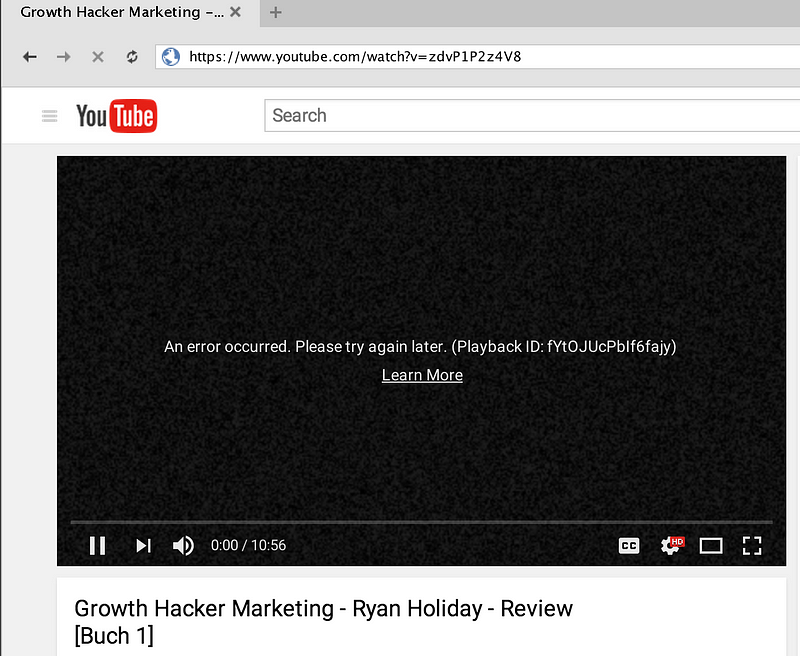
It’s a review of another book about growth hacking. All I had to do was comment, tag the author, ask him if he were willing to review our book, and offer to send him one for free. (If you’re reading this now it’s going to be pretty awkward).

My assumption is this person will find the conversation to be completely authentic, because it is. The fact that there’s now a link on his video that people who are searching for something else will find is just an added bonus.
As an aside, I much prefer to hold “shift” and click on a link to open it in my normal browser if I’m just going to be commenting as myself.
The next one I found was a roundup of great growth hacking blog posts from the week.
I left the following comment:
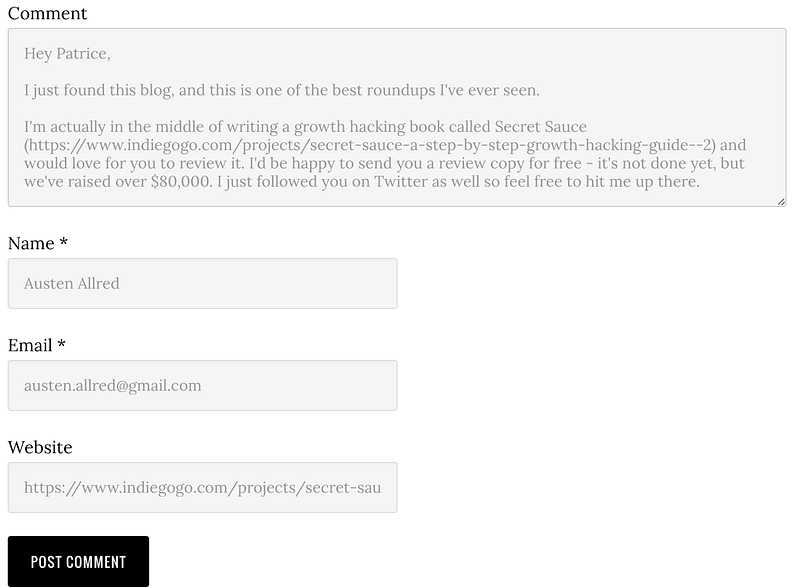
Note how I followed him on Twitter so that it’s obviously personal and not an automated spam comment. I even went a little bit overboard and tweeted at him just for kicks.

That is how you get people on your team.
As you get further along and have an idea of how to get a good response, I’d recommend starting to sort by reach, ramping up the number of keywords you’re searching for, and possibly even gasp upgrading to the paid version of BuzzBundle.







